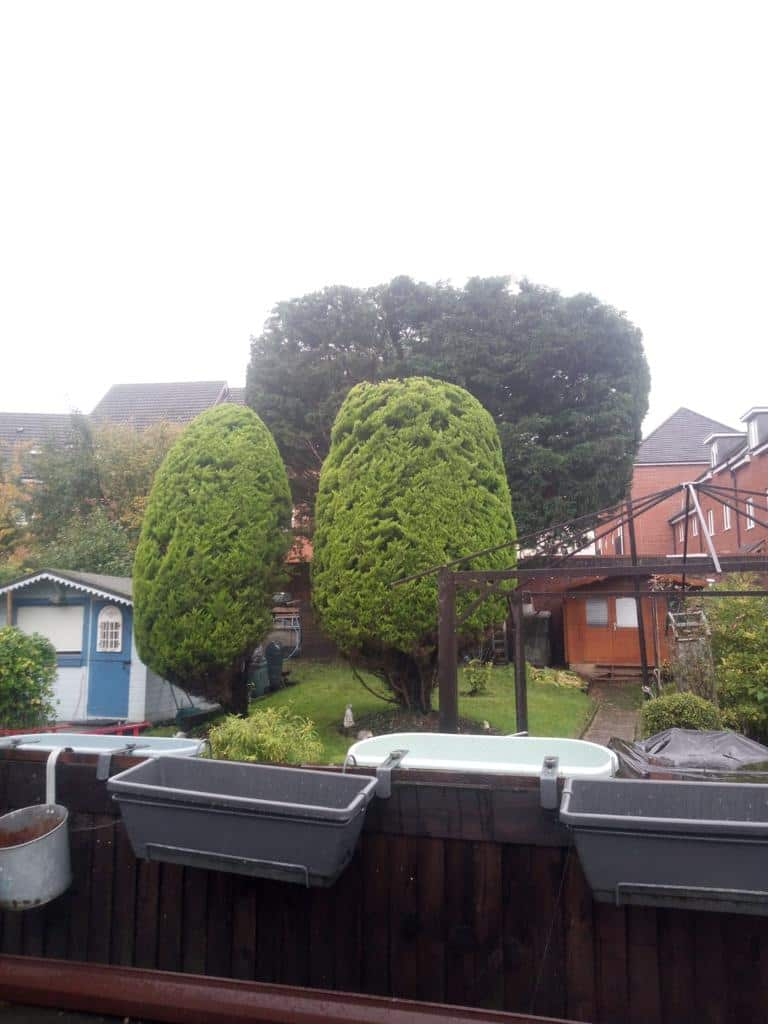When a tree is felled, the stump that remains can be an unsightly feature on your property, potentially causing obstacles in your landscaping and becoming a tripping hazard. Stump grinding is a common and effective method to remove tree stumps, but homeowners often wonder what happens to the ground after this process is completed. In this blog post, we’ll explain the aftermath of stump grinding and what to expect when you choose this service.
What is Stump Grinding?
Stump grinding is a tree surgery method where a professional tree surgeon uses a specialised machine to grind the tree stump down to below ground level. This process involves using a powerful rotating blade to break the stump into small chips, removing most of the stump’s bulk and leaving behind a hole in the ground.
The main benefit of stump grinding is that it avoids the need for stump removal, which can be much more invasive and costly. However, it’s essential to understand what happens to the ground once the stump has been ground down to ensure that your garden looks tidy and is ready for replanting or landscaping.
What Happens to the Ground After Stump Grinding?
After the stump grinding process, the ground is left in a state that requires some attention before you can return it to its original condition. Here’s what to expect:
1. A Hole in the Ground
The most immediate change after stump grinding is the creation of a hole. The depth and width of this hole depend on the size of the stump and the equipment used. Typically, the stump grinding process will leave a hole that is around 6 to 12 inches deep. While this isn’t a massive hole, it will need to be filled in to restore the ground’s level and stability.
2. Wood Chips and Mulch
As the stump is ground, the grinding process produces a significant amount of wood chips, which will cover the hole. These chips are often left behind by the tree surgeon and can be used as mulch in your garden. If you plan on replanting, you can also use the wood chips to fill the hole or dispose of them as you see fit. However, it’s worth noting that large quantities of wood chips can temporarily deplete the soil’s nitrogen levels, so it’s important to replace them with soil or compost to support future plant growth.
3. Soil Compaction
The area where the stump was located may become compacted after the grinding process. This happens when the grinding machine’s weight and the vibrations from the equipment compress the soil around the stump. Soil compaction can affect the drainage of the area and may prevent new plants from rooting properly. It’s recommended to aerate the ground before filling the hole to prevent issues with water drainage and soil health.
4. Root Systems May Still Be Present
Although stump grinding removes the main stump, the roots of the tree may still be present underground. These roots can continue to decompose over time, but in some cases, you may notice some surface roots or the remnants of the root system, which can be removed or left to decay. Depending on your plans for the area, you may want to dig deeper to remove the remaining roots to prevent future growth and allow for better use of the soil.
How to Restore the Ground After Stump Grinding
Once the stump has been ground down, you will need to restore the ground to make it suitable for further use. Here are some steps you can take:
1. Fill the Hole
To fill the hole left behind by the grinding process, it’s important to use a combination of soil, compost, and other organic material. This will help level the ground and allow for proper drainage. The mix should be well-aerated to encourage healthy plant growth.
2. Add Fresh Soil
Since the grinding process often leaves behind wood chips that can reduce soil fertility, adding a layer of fresh, nutrient-rich soil will help to enrich the ground. This will create an ideal environment for any plants, grass, or shrubs you wish to grow in the area.
3. Ensure Proper Drainage
After filling the hole with soil and compost, make sure that the area has proper drainage. Compact soil or improperly filled areas can lead to waterlogging, which can affect the health of new plants. Consider lightly aerating the soil with a fork to allow water to drain more effectively.
4. Plant New Vegetation
Once the ground has been restored, you may want to replant grass, flowers, or shrubs in the area. If you plan on replacing the tree that was previously removed, make sure to select a tree variety that is suited to the soil conditions and your local climate.
Conclusion
Stump grinding is an efficient and effective way to remove unwanted tree stumps, but it’s important to understand the effects it will have on the ground. After the process, you will be left with a hole, wood chips, and possibly some surface roots. Restoring the ground involves filling the hole with soil, compost, and fresh nutrients, followed by replanting or landscaping the area.
At Nazeing Tree Surgeons, we specialise in professional stump grinding and tree surgery services. If you need help with tree stump removal or want to learn more about how we can restore your garden after stump grinding, contact us today. Our team is here to provide you with expert advice and top-quality tree care services.
Call us on: 01992 932 997
Click here to find out more about Nazeing Tree Surgeons
Click here to complete our contact form and see how we can help with your tree care needs.

